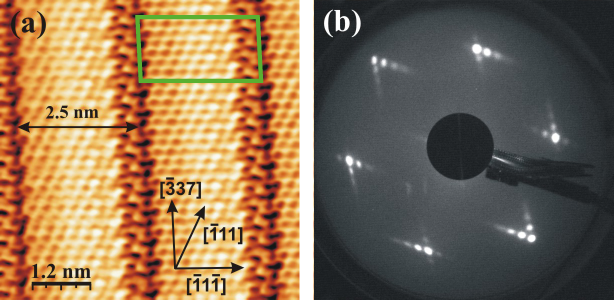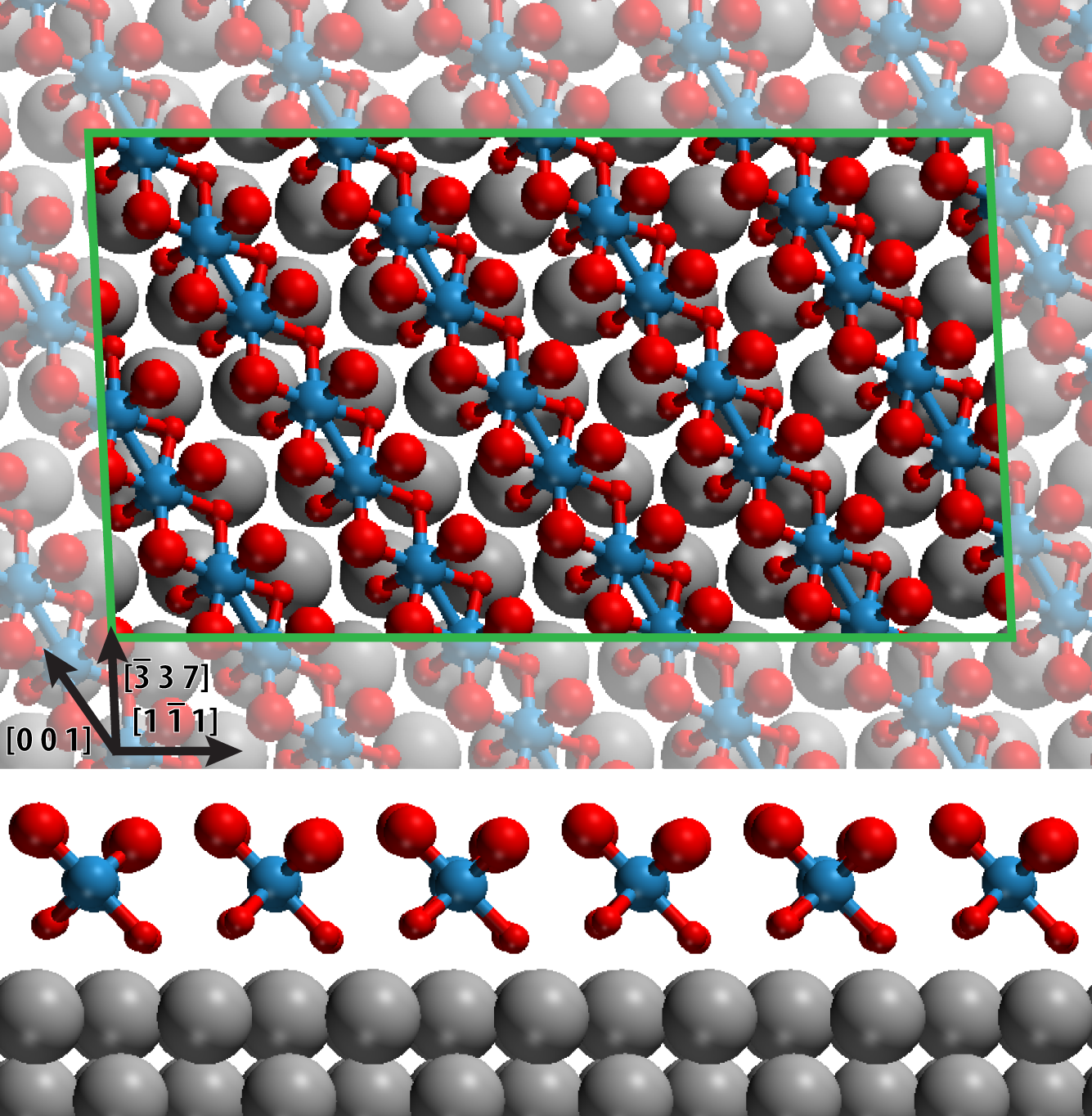
The high-temperature oxidation of W(110) results in the formation of a thin, strained-commensurate WO2(010) structure at the surface [94]. A typical STM image and a LEED pattern taken from the WO2/W(110) surface are shown in Figures 3.6a and 3.6b, respectively.

WO2(010) has an O–W–O trilayer structure and forms well-ordered oxide nanorows separated by 2.5 nm on the surface (Figure 3.6a). These rows appear as bright regions with dark depressions in between. The atomic structure of the WO2 overlayer is shown in Figure 3.7. The trilayer structure can be clearly seen in the side view schematic, looking along the [001] direction of the substrate.

The LEED pattern (Figure 3.6b) shows characteristic satellite spots around each primary W(110) spot, representing two equivalent overlayer domains on the surface. The WO2 nanorows follow either the [37] or the [3] directions of the W(110) substrate depending on the domain [94]. The WO2 overlayer has an oblique unit cell with vectors a = 2.5nm and b = 1.3nm, as obtained by STM and confirmed by LEED, shown on Figure 3.6a as a green parallelogram.
The presence of oxide nanorows can influence the growth of a C60 molecular overlayer, and so the WO2/W(110) surface has been chosen as an interesting nanostructured template for their self-assembly.